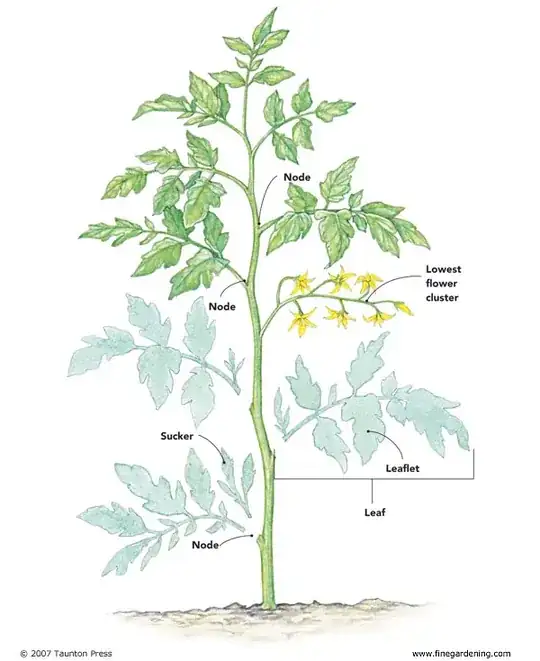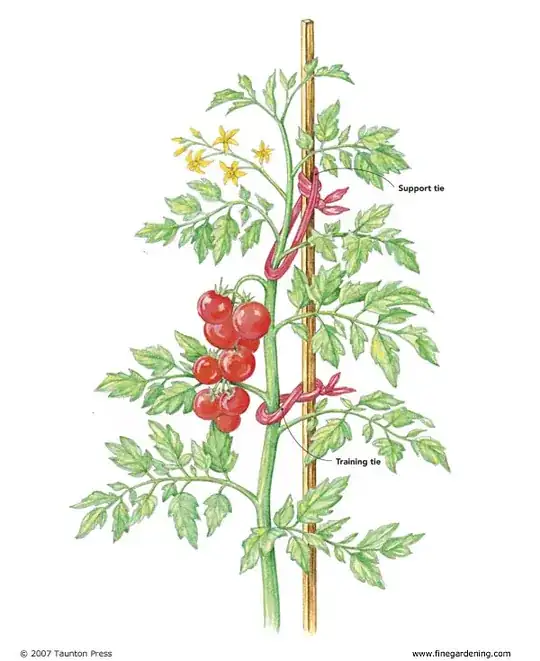Here are a few things you can do to promote fruiting in your tomato plant.
1. Remove the suckers
Suckers are the small offshoots that rise from between the central stem and a leaf node (see image). Suckers need to be removed periodically (aas soon as you see them), as they only suck essential nutrients from the plant, which could otherwise have been used to produce a bigger fruit.
You can easily remove these suckers by pinching with your fingers and shaking them loose. You don't need a blade or pruning shears to remove it (and it is recommended that you don't cut the sucker flat, close to the base as that wound takes longer to heal than a wound at the node).
You'll find that the suckers closer to the top are tiny and easier to pinch off than the ones in the bottom. If, by chance, you haven't tended to them by now and if your suckers are really strong, there is a technique called Missouri pruning, in which you only pinch off the tips of the suckers. The drawback is that you'll have to keep tending to suckers that shoot off from these. You can read more about pruning tomatoes here. The image is also from that website, however I couldn't find a direct link to it.

2. Remove leaves close to the ground & ones in the shade.
The primary purpose of a leaf is photosynthesis. It needs to produce energy for the rest of the plant. If your leaves are in the shade, there is net energy loss (i.e., they consume more than they produce). It is a good idea to remove these leaves so that the energy is directed upward towards the fruits.
As shown in the picture, some people advocate pruning the plant below the first fruiting cluster, so as to promote airflow and provide it space to grow. I have never done this and my plants have been doing fine. However, I do plan on trying this out with my plants this summer.
3. Provide adequate support.
I cannot emphasize this enough. Tomato plants are easily damaged either by winds knocking down unrestrained plants or snapping due to the weight of the fruits. As such, you'll need to provide good support for them either by enclosing them in a cage (see related questions: [1, 2]) or by using a stake. The article linked above also has some good tips on securing tomato plants (the following figure is also from the same page). In brief, you tie the plants to 1) train them and 2) to secure them. In training, you need to tie the leader to the support loosely so as to guide it upwards. Once you have a fruiting cluster, you need to support it by looping the tie around the fruiting vine.


